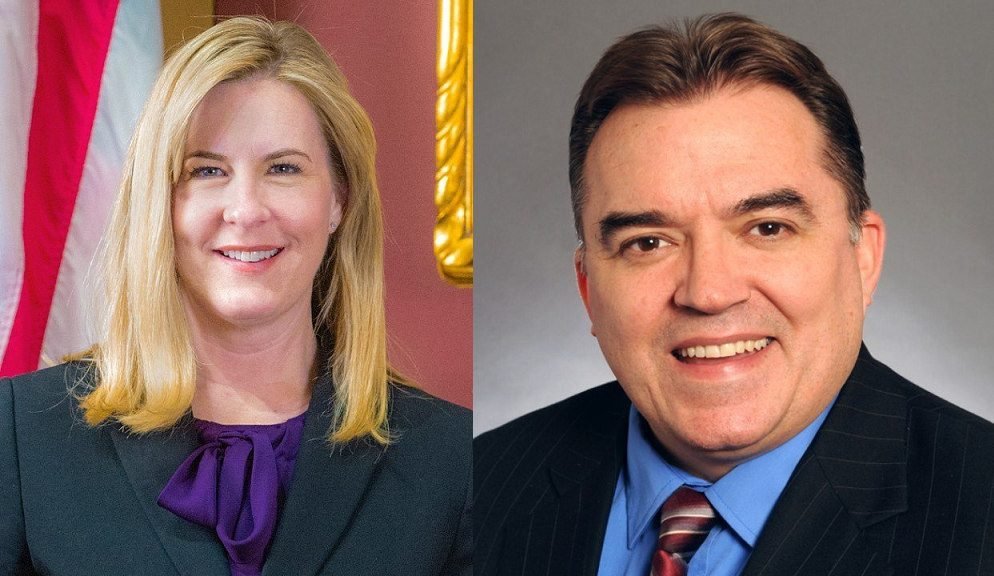
It was supposed to be just another day at the Minnesota State Capitol—a day of debate, deliberation, and democracy in action. But what unfolded instead was a horrifying tragedy that left multiple lawmakers shot, a state in mourning, and a nation once again grappling with the epidemic of political violence.
What Happened?
On a cloudy Wednesday morning, just as legislative proceedings were about to begin, chaos erupted within the corridors of Minnesota’s political power. An armed individual entered the Capitol building and opened fire on a group of lawmakers. The incident happened around 9:45 a.m., catching everyone off-guard.
Initial reports confirm that at least three lawmakers were shot inside a committee room. Security footage and witness testimony indicate that the shooter walked in during a public session and targeted specific individuals.
Victims of the Shooting
Among those shot were:
- State Senator Karen Hillstrom, a senior Democrat from Minneapolis
- Representative Mark Donovan, a Republican lawmaker from Duluth
- Representative Sylvia Chao, a freshman legislator from Saint Paul
All three were immediately rushed to local hospitals. Senator Hillstrom was reported to be in critical condition following surgery. Rep. Donovan suffered injuries to his shoulder and is stable. Rep. Chao was treated for a leg wound and released within 24 hours.
The Attacker

The shooter was later identified as Eli Matthews, a 38-year-old man from Rochester with a known history of anti-government sentiment and mental illness. According to law enforcement, Matthews had previously made threats online against public officials and was under informal surveillance.
He entered the Capitol legally, carrying a concealed weapon. Authorities now believe he may have had a politically motivated hit list.
Matthews was subdued by Capitol police after a brief standoff. He has been charged with three counts of attempted murder and one count of terrorism.
Law Enforcement Response
Minnesota Capitol Police responded within minutes. Officers evacuated the building while engaging the shooter near the south wing. Matthews was taken into custody after being wounded in the leg.
Governor Tim Walz immediately ordered the activation of the Minnesota National Guard and issued a statement condemning the attack as “an assault not only on our lawmakers but on democracy itself.”
Eyewitness Accounts
Bystanders described the scene as surreal and terrifying. Lobbyist Angela Timmons, who was present during the shooting, said, “At first, we thought it was a drill. Then I heard someone scream, and the shots kept coming.”
Staffers and journalists ducked under tables while others helped the wounded. The Capitol, known for its transparency and openness, quickly turned into a warzone.
Medical Emergency and Hospitalization
Medical teams from Regions Hospital and Hennepin County Medical Center were on standby and performed admirably under pressure. Trauma teams conducted multiple surgeries, and hospital administrators held a press conference urging people to donate blood.
One doctor stated, “We’re lucky we didn’t lose anyone today. But make no mistake, these were life-threatening injuries.”
Public and Political Reaction
The public reaction was swift and emotional. Vigils were held across Minneapolis, St. Paul, and even outside the Capitol itself. Governor Walz ordered flags to be flown at half-staff, and Minnesota’s congressional delegation stood united in condemning the act.
President Joe Biden also issued a statement, offering federal support and calling the attack “a stark reminder that political violence is never acceptable in a civilized society.”
Social Media and Public Outcry
The incident sparked a storm on social media. Hashtags like #PrayForMinnesota, #EndGunViolence, and #ProtectOurLawmakers began trending within hours.
Influencers, celebrities, and regular citizens joined in demanding answers. Online petitions calling for stricter Capitol security and gun control measures garnered over 1 million signatures within 24 hours.
Security Protocols at the Capitol
The shooting has exposed serious flaws in the Capitol’s security infrastructure. Although metal detectors are present, loopholes in visitor checks allowed Matthews to bypass them.
Lawmakers have since called for:
- Full-body scanners at all entrances
- Mandatory background checks for Capitol visitors
- A review of all concealed carry permits in the state
Mental Health and Gun Control Debate
The tragedy has reignited fierce debates around gun control and mental health. Advocates argue for red flag laws, stricter background checks, and limits on firearm access for individuals with known mental health issues.
Others emphasize the need for improved mental health services, noting that Matthews had been in and out of psychiatric care for years without consistent support.
Historical Context
While violence against public officials is rare, it’s not unprecedented. From the shooting of Congresswoman Gabby Giffords in 2011 to the Capitol riot in 2021, the U.S. has a troubling history of politically motivated violence.
This incident ranks among the most serious attacks on state lawmakers in recent history.
Legislative Impact
The shooting forced the immediate suspension of all legislative activities. Key bills, including education reform and infrastructure funding, have been delayed.
Speaker of the House Rachel Levin announced a weeklong recess and initiated a bipartisan task force to investigate the breach and prevent future incidents.
Unity Across Party Lines
In a rare show of unity, Democratic and Republican leaders stood side-by-side at a press conference. “We may disagree on policy,” said GOP Minority Leader Tom Becker, “but we all believe in democracy and the safety of those who serve it.”
This tragedy has sparked new conversations about collaboration and civility in politics.
Moving Forward
As Minnesota begins to recover, many are wondering: what’s next? The attack has left a psychological scar on the Capitol and its people. But if there’s one silver lining, it’s the renewed resolve to stand united against hate and violence.
From increased security to compassionate policymaking, the shooting has set the stage for significant change in Minnesota politics.
